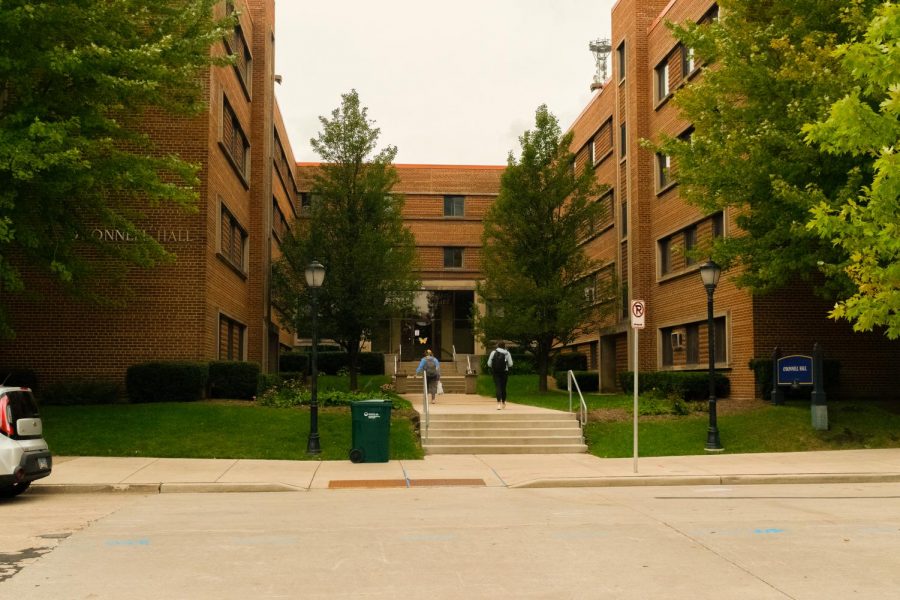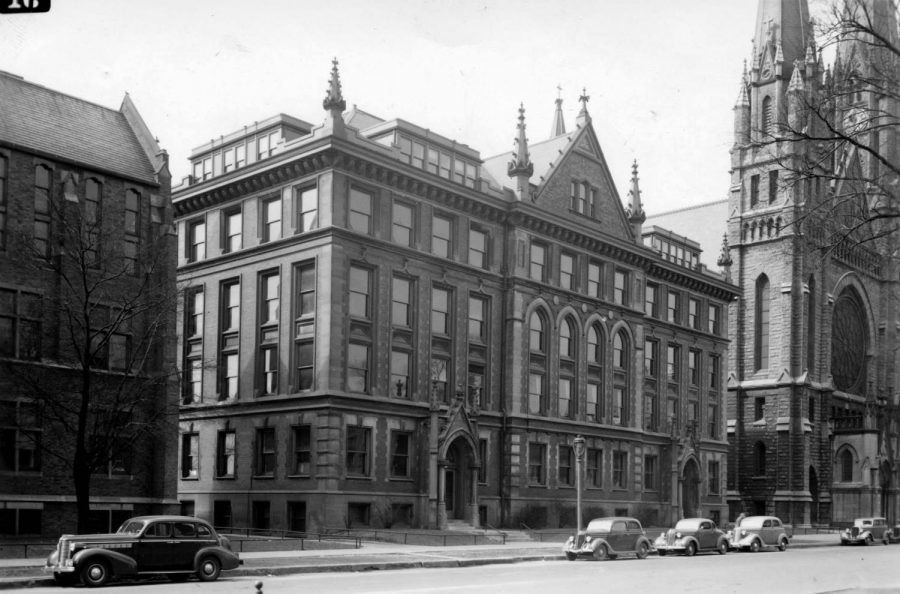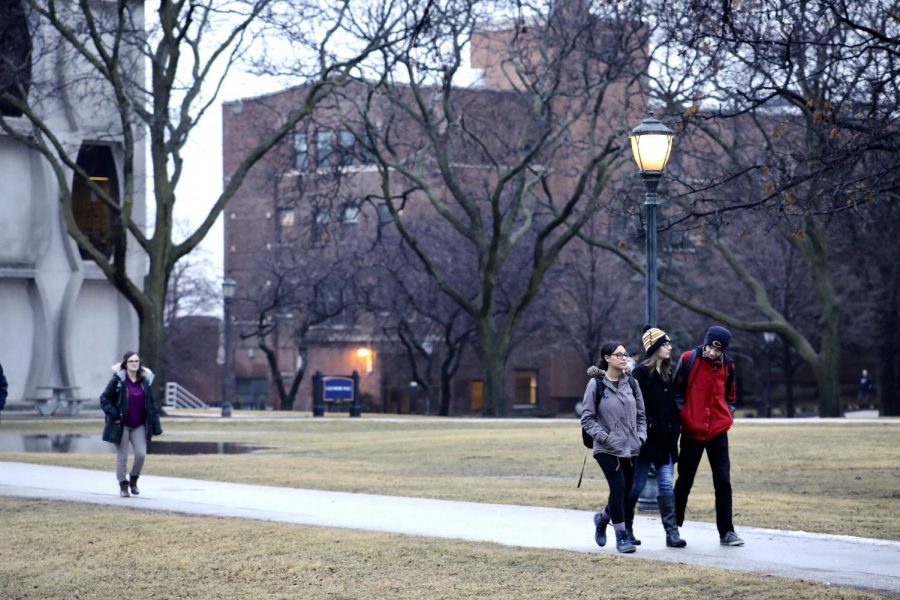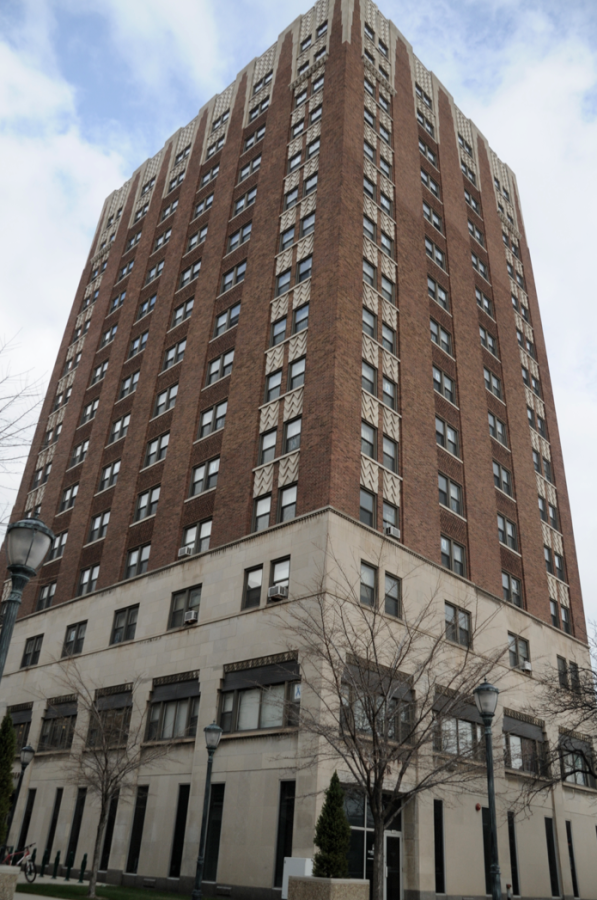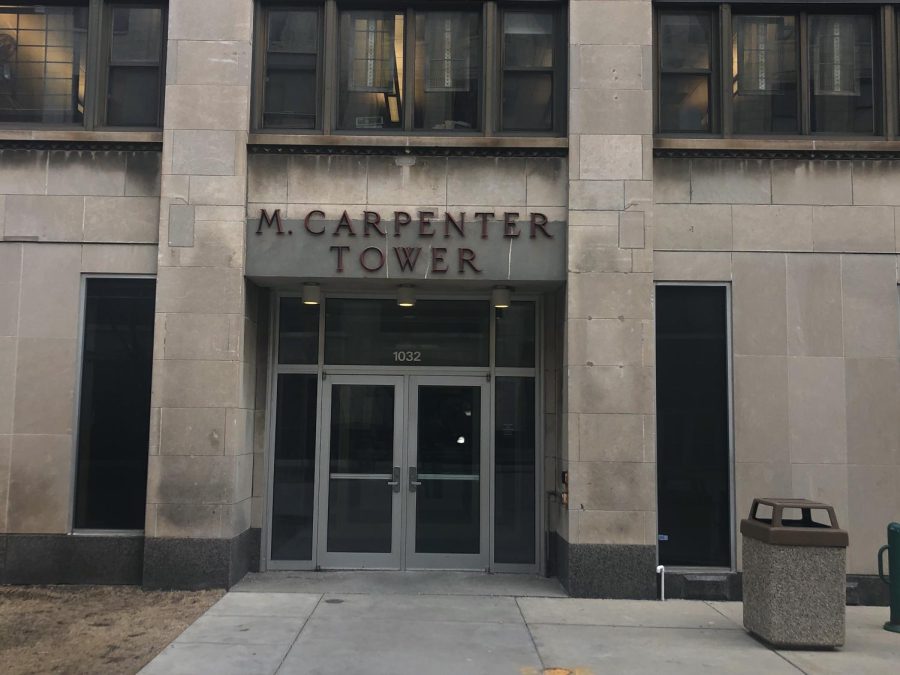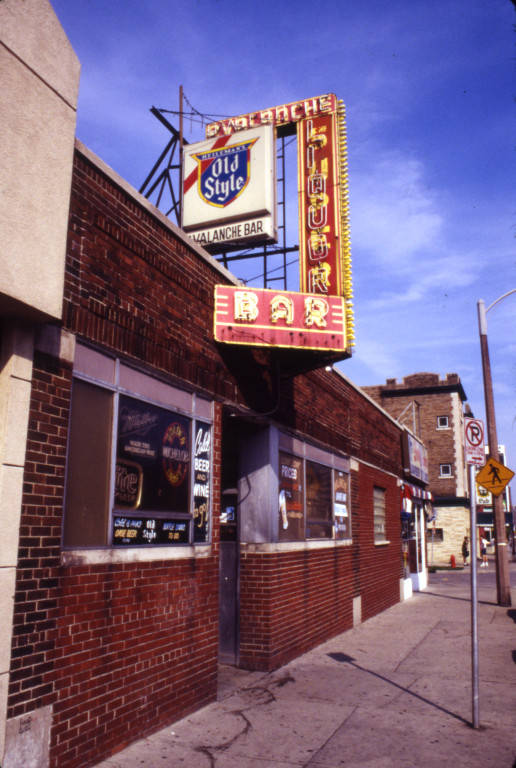Turning off Wisconsin Avenue onto 17th Street, my eyes immediately go up, following the glass exterior of the newly built residence hall, its roof almost touching the sky.
The Commons — at the time Wild Commons — seems a bit out of place next to Humphrey Hall and O’Donnell Hall, which are nearby residence halls. Unlike The Commons, Humphrey and O’Donnell are both made of red brick built around the 1950s.
Despite being jarring in its appearance and location – as it sits in the center of campus – I’m excited to start my first year of college living in The Commons. It is one of the few residence halls with air conditioning and a dining hall located inside.
During my first week of classes, I begin to recognize that many of the buildings and spaces on campus are drastically different than newer Marquette buildings like The Commons, Engineering Hall and Eckstein Hall.
Lalumiere Language Hall, William Wehr Physics and Todd Wehr Chemistry are among these unequaled spaces.
Water fountains don’t work properly, some classrooms still have chalkboards and desks are often jammed right next to each other.
As I continue to observe and occupy different spaces on campus during my time at Marquette, university priorities become more and more stark.
Since 2018, the university has built the Athletic and Human Research Center, The Commons and announced that a new College of Business Administration building will be going in the green space by the Alumni Memorial Union where McCormick Hall stood. Construction for the new building is anticipated to begin fall 2021.
Rather than investing time and resources to fix buildings like Lalumiere — which is classified as needing “major repair” on the university’s Beyond Boundaries Campus Master Plan — these resources are being allocated for “building campus up.”
In the Master Plan, Marquette lays out its plan of how campus will look in the future.
Part of the plan showcases university plans to create an “Innovation Alley,” which will be geared towards research, science, engineering and business. The university also hopes to establish a “BioDiversity District” for biomedical and biological sciences next to Lalumiere.
Additionally, the university originally planned to build a Recreation and Wellness Center in the green space next to the AMU that would be dedicated to recreation, wellness, counseling and a medical clinic. Now, however, there will be a new business building there instead.
In the Master Plan, the university bullet points specific criteria it aims to consider when prioritizing decisions on the plan, such as being mission driven and interdisciplinary as well as cultivating balanced students and community. Marquette also identifies the mission of pledging “personal and holistic development of students as our primary institutional vocation” as one of its guiding values.
Unfortunately, it is difficult to see how these aspirations of holism and interdisciplinary will translate to spaces on campus, as those in STEM and business fields continue to be prioritized.
The lack of prioritization and investment in maintaining or renovating buildings on campus for those in social and cultural sciences, communications or education fields may indicate that these fields are not valued as much by the university, despite their essentiality and importance to society.
Additionally, many majors such as political science, are restricted to a single floor of a building, which makes it unclear which areas of study these buildings were intended for.
It is understandable that university decisions are restricted by numerous factors, such as funding and property ownership.
But continuing to neglect specific spaces is unfair and hurts students, faculty and staff who are passionate and dedicated to non-STEM and non-business fields. All fields of study are important, and the university should make deliberate efforts to support this truth.
The second page of the plan poses the question, “How can our campus master plan help Marquette be among the most innovative and accomplished Catholic and Jesuit Universities in the world?”
Pursuing “innovation” and striving to be “accomplished” should not be limited within a STEM and business lens.
Moreover, the Master Plan showcases that new buildings will all have a similar modern look of glass and metal.
Striving for a transparent, uniform campus not only takes away from Marquette’s history and the character and diversity of spaces on campus but it could also create tension and division with the surrounding communities.
Although Marquette strives to create connections with the Milwaukee community, this is not always the case, as it has made decisions that further sever these relationships, such as purchasing the Ramada Hotel on W. Michigan Street in 2015 and a 7-acre plot of land on Milwaukee’s west side. Continuing to expand, distinguish and separate campus from the nearby area will potentially worsen these relationships and negatively impact communities.
Buildings don’t need to be torn down. Creating a uniform campus should not be the objective at hand.
If structurally stable and safe, the university should strive to maintain different buildings on campus, rather than tearing them down to build new ones. This will help Marquette avoid creating more barriers with the surrounding communities. And, it will help campus maintain its history. The range of architecture among buildings doesn’t worsen Marquette’s campus; it is beautiful and enriches its character.
Buildings, like Lalumiere, must get the necessary attention they need to ensure that the historical structures and character of these unique spaces are maintained. In order to do this, the university should pursue interior renovation, such as simply switching out chalkboards for whiteboards and updating bathrooms and water fountains, to make sure students are receiving equitable classroom experiences across different fields of study. Moreover, non-STEM and business majors must get equitable space in these buildings and on campus.
Being “modern” doesn’t equate to being “good.”
The university should work with what is currently available, rather than trying to make more.
Instead of constructing a new building for the College of Business Administration, Marquette should work with what is available, especially considering Straz Hall is classified as needing “evaluation” rather than “major repair.”
Though I was initially in awe of The Commons on move-in day, I now feel that it is uncomfortable looking. It is jarring and unsettling to me. So different from the buildings directly surrounding it, the residence hall gives a glimpse of what Marquette will look like in the future — out of place, divided from the community and lacking holistic Jesuit values.
This story was written by Alexandra Garner. She can be reached at alexandra.garner@marquette.edu.

